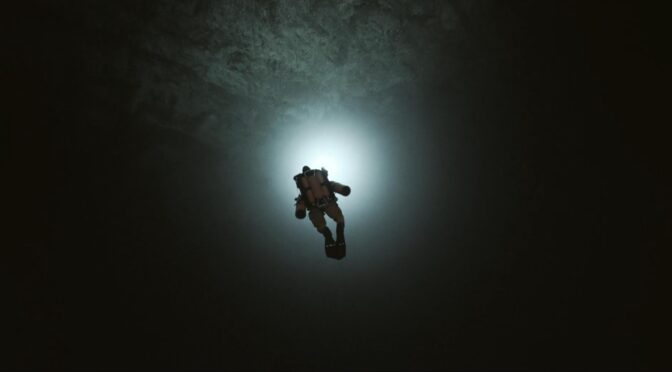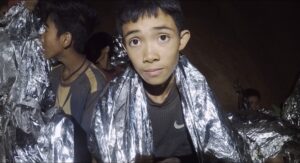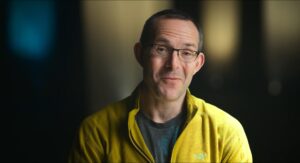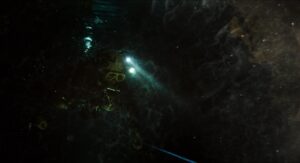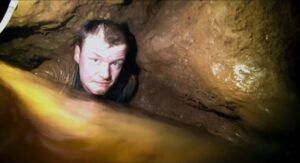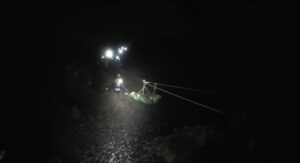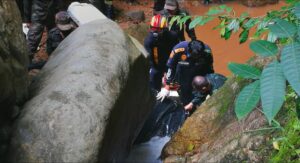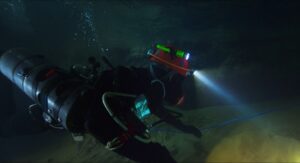Some time after November 2020 and after the uneasy haze of paranoia and exhausted hope that was December, someone with a Twitter handle felt confident enough to say a few optimistic, forward-looking words. What they said was that, whatever the Biden Administration had in store over the next few years, they were tentatively eager to return to some semblance of competence. That matters would once more be conducted, however soullessly, greedily or bureaucratically, by people who believed in a rule of law and a certain time-tested way of doing things. It might end up being as enjoyable and inspiring as a visit to the DMV, but there was an immediate feeling of relief in even returning to that grinding, hidebound state of affairs. DMV’s may be soul-crushingly clinical, unsympathetic and slow, but they are at least rarely chaotic. One year and change later, there are arguments to be made about how functional and competent the new regime has been and also how much blame is to be apportioned between the slow bureaucrats and the remaining agents of craven chaos that still gleefully tie the bureaucracy’s shoelaces together. But I bring this all up because there is something resonant in the desire to be surrounded by people who are at least trying to get a job done. Who want to be functional at their roles, even if that function can seem limited and indifferent to the bigger picture. It struck me while watching The Rescue, 2021’s best documentary, what a comfort there is to be had in watching smart, capable people come together to do something helpful for the greater good. Chalk it up to four years of obstructionism and sabotage by our own leadership, but I felt a serenity in The Rescue, at the same time that my heart was palpitating with it. The year’s most claustrophobically tense cinematic offering took on the peaceful vibes of a YouTube ASMR video at certain points. What times we live in when a white knuckle disaster film can take on the warm glow of comfort food!
As they demonstrated with their Academy Award-winning masterpiece Free Solo, directors Elizabeth Chai Vasarhelyi and Jimmy Chin have a knack for balancing unbearable tension and laidback empathy. Free Solo had me grinning and gripping my seat rest in roughly equal measure. The Rescue achieves a similar feat and throws in a heaping handful of tearful catharsis too. It’s a promising development in their relatively young careers (the husband and wife team had made one previous climbing documentary together, 2011’s Meru, before really breaking out with Free Solo a few years ago), showing a hunger not just for documenting great feats of adventuring but for infusing those tales of derring-do with humanity and swelling emotion. Many of you probably still recall the global news event that sets The Rescue into motion. In 2018, twelve adolescent boys from a Thai soccer team, as well as their assistant coach, went spelunking into one of the many gorgeously labyrinthine caves that snake under the limestone Doi Nang Non Mountains of Northern Thailand. The plan was simply to explore and throw a birthday picnic for one of the players while they were down there. However, a sudden outbreak of heavy rainfall flooded the caves and left the team trapped some two-and-a-half miles inside the snaking system of tunnels. A myriad of concerned citizens of the world, from the Thai Navy to a mass of international volunteers to religious leaders, all flocked to the caves to lend their efforts, but the barrage of rain from the beginning monsoon season and the beyond-challenging conditions inside the cave (One subject says just swimming beyond the entrance felt like navigating whitewater) meant that the prospects for the boys’ survival were grim. As fortune had it, one local was an older British man with a peculiar hobby: cave diving. His niche interest had put him in contact with Rick Stanton and John Volanthen, two of the biggest fish in this exceedingly small and dangerous pond. The story of how two British men ended up unofficially spearheading a miraculous rescue effort in the Thai Highlands and the cavalcade of obstacles they faced is a thing I dare not ruin with over-explanation. Suffice to say that The Rescue can stand alongside Apollo 13 in the annals of great and rousingly meticulous problem-solver cinema. Elizabeth Chai Vasarhelyi and Jimmy Chin’s tremendously detailed true yarn has so many thrilling and fascinating twists, it makes a rescue film like The Martian seem sedate by comparison. I had truly forgotten the simple, weepy joys of watching intelligent people out-maneuver certain doom and, for reasons as topical as COVID and as universal as the joy of seeing human tenacity in action, it felt positively rejuvenating to watch it happen.
Of course, the “watch it happen” of it all is itself a minor miracle of filmmaking. For, as you may well have put together by now, Vasarhelyi and Chin did not just happen to be in northern Thailand when this thrilling saga went down. Nor would they have been inside the caves filming the rescue if they had been. The challenge of being in these caves at the time was so perilous that only a small handful of experts in an extremely niche subculture could even think to attempt it, and even they knew they were taking their lives into their hands. What we have then is a work of non-fiction built substantially out of dramatization, in order to recreate the astounding experience of bodies moving through those narrow spaces and brackish, unforgiving waters. If Free Solo felt at times cinematically modest outside of its thrilling El Capitan climax, The Rescue announces that Elizabeth Chai Vasarhelyi and Jimmy Chin can move a few mountains of their own when they need to. It is incredible to see the scope of what they’ve recreated here, but even more jaw-dropping is that I rarely snapped out of my reverie (or back from the edge of my seat) long enough to even register that what I was seeing was being dramatized at all. That is partly an accomplishment of bravura technical filmmaking, but it is even more a credit to the fact that The Rescue’s spectacle and scope are secondary tools on its utility belt. Because what really makes this film soar is the richness of its Swiss timepiece plot and the empathetic way it gives its subjects character beats within that plot. The way it creates a delicious party mix of narrative surprise, humor, and human reflection is a reminder that, while Vasarhelyi and Chin may seem to be operating within their own niche area of thrill-seeking outdoorsmanship, it is folly to pigeon-hole them; to see the National Geographic production title at the beginning of the film and think we already have them pegged. Their work feels too emotionally transcendent to be filed under either sports or nature. They have my blessing to never make a single film without a harness or crampon, so long as they are all rendered with this much heart and vibrant empathy.
That ineffably soulful and positive seam that runs through The Rescue and Free Solo is important in the same way feeling the safety mechanism snug against your chest at the start of a rollercoaster ride is important. When you find yourself about to zoom away on a journey with this much breath-catching storytelling velocity and with stakes this high, it’s important to feel a little security. To know that you are in safe, responsible hands. Because our adventurous directing duo have clearly absorbed enough of the world’s thrills themselves (Jimmy Chin’s feats include scaling Mount Everest) to know how to transmit that adrenalized feeling to their audience. In the back of our minds, we know that The Rescue will end happily, just as surely as we know that Free Solo is not the sad tale of Alex Honnold falling to his death from El Capitan, but Vasarhelyi and Chin tighten a screw with such diabolical glee that it is easy to forget about happy outcomes for a couple unbearably fraught hours. They are deft at keeping us locked in the moment and they build this story with the patience of Lego enthusiasts. As hesitant as I am to spoil a single beat of this plot, perhaps we can open just one Christmas present early, in the name of showing just what a fantastically constructed adrenaline machine The Rescue is. The first time our two hellbent hobbyists enter the cave (I could write an entire essay on how Vasarhelyi and Chin stand in awe of death-courting obsessive while never entirely letting their psyches off the hook), they find people there in one of the first chambers. These are not the trapped boys, but four grown men; utility workers who were unable to escape when the flooding began. The men are thankfully alive, but the British divers have to extract them by carrying them underwater to the safety of the entrance. It’s a relatively short distance away, but the process is nearly disastrous. The men thrash against their saviors and reflexively bang their heads against the cave ceiling in a claustrophobic panic. One diver describes the process as akin to an underwater wrestling match. A detail like this adds so much to an already gripping and full-to-bursting story. For one thing, it adds a marvelously scary dash of color to a narrative that was never not tense to begin with. Beyond that, it organically complicates the already sticky matter of the rescue, for the divers now realize that any kind of simple extraction effort is doomed to fail. What barely worked with a few grown men for a few minutes can hardly be expected to work with a dozen scared boys over the course of some four hours. And then, beyond mere story mechanics, the anecdote with the utility workers invites our imaginations to recoil at the agonizing detail of it all. The distance, the darkness, the terrible animalistic fear that anyone would feel in that situation. Which is why only this small group of awkward Britons with strange, specifically wired brains can even conceive of going on this excruciating odyssey. Which then makes it feel all the more fiendishly inconceivable that Vasrhelyi and Chin are sending us with our squishy, non-thrill-seeker brains down there with them. Before we can arrive back in the sweet safety of The Rescue’s joyfully tearjerking finale, we must first endure one heart attack of a dark story ride. The only way back to Gepetto’s Workshop is through the belly of the whale.
But what a delight it is to arrive at the other end of it, born anew and baptized in some combination of cold sweat and salty tears. It’s a lovely feeling to have experienced all the slow-building tension and terror and to feel the release and to laugh at the harrowing ordeal we have allowed ourselves to experience vicariously. The Rescue takes a near disaster and makes it so entertaining that it almost feels indecent. But once you’ve see it, one cannot imagine trading it for something more staid, studied, and conventionally inspirational. And I would not trade Elizabeth Chai Vasarhelyi and Jimmy Chin as filmmakers for anyone less given to heightened sensations. In a world full of talking head documentaries (and The Rescue has its own fair share of talking heads), I don’t know that I will ever begrudge a documentarian for seeking something more ecstatic than just bare facts. As I begin to salute the great artists of 2021, I am so pleased to count two journalists who can tell a story in strokes of passion, spectacle and emotion. As I noted with 2020’s masterful documentary, Honeyland, you know you have a brilliant documentary on your hands when you can picture it being every bit as rich and interesting if the story were pure fiction. Every documentary filmmaker has an obligation to present the facts honestly, but the truth need not be an obstacle to dynamic storytelling. The great ones take the facts and paint with them.
To put it another way, any story probably has more possible details and nuances – more truth inside of it -than a single film can encompass. The art of telling a great non-fiction story lies in carefully curating the facts and deciding which ones to give emphasis. The Rescue even acknowledges that, outside of its central story of these UK divers, there were many thousands of people who were no less vital to the survival of those boys. Before the divers could even begin their rescue, armies of volunteers had to methodically take strips of tarp and plug up cracks in the hillside to keep more water from falling into the caves. A mass of people came together to literally seal a mountain and it is but a single detail in The Rescue’ s intricate plot. Think what a story that would make! Then a wise religious elder came when all hope seemed lost and he led everyone in days of prayer to calm the monsoons and, would you believe it, it worked! What a gorgeous look at the age-old dialect between faith, reason, spiritualism, and science that would make! The Rescue honors a multitude of selfless human beings even as it sticks primarily to the action-packed business of an adventurous few. It recalls a film like Clint Eastwood’s underrated Sully in how it finds heroism not only in the death-defying but in simple acts of discipline and professionalism. Beyond mere competence, the film seems possessed of a more noble spirit. Call it generosity. Call it community. Call it anything but indifference. The film sees more love, compassion and ingenuity in this tale than it can possibly unpack in two hours. It leaves those other wonderful wrinkles for the next storyteller to more fully unfold. Just add water.
